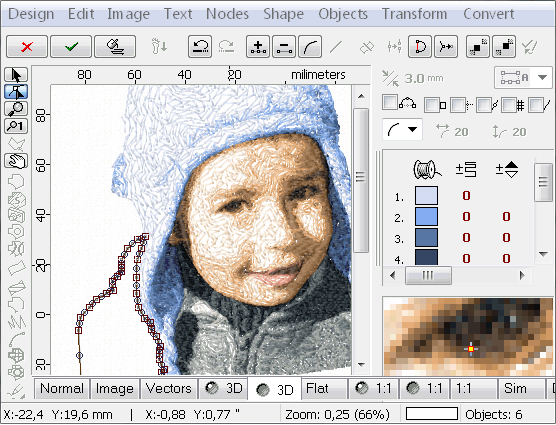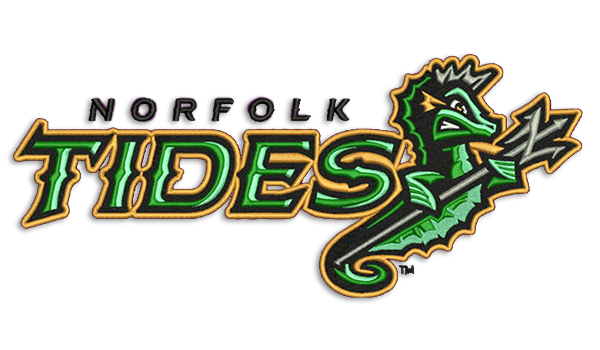Comprehensive Digitizing for Embroidery: From Layout to Sew
Comprehensive Digitizing for Embroidery: From Layout to Sew
Blog Article
Simplifying the Art of Embroidery Digitizing: Step-by-Step Overview
Needlework digitizing is a thorough craft that requires precision and creativity. As technology proceeds to development, the digitization process has become more accessible, permitting lovers to bring their elaborate designs to life effortlessly. In this overview, we will untangle the intricacies of embroidery digitizing, breaking down each action systematically to improve the procedure and equip both beginners and seasoned embroiderers alike. Keep tuned to find just how you can simplify this intricate art kind and transform your imaginative visions right into perfectly embroidered work of arts.
Recognizing Embroidery Digitizing Software Program
Embroidery digitizing software program acts as an important device for transforming detailed designs right into digital styles suitable with embroidery makers, facilitating exact sewing and personalization. This customized software application permits users to import different photo documents formats, such as JPG or PNG, and convert them right into embroidery machine-readable styles like DST, EXP, or PES - Digitizing for Embroidery. By making use of functions like stitch editing and enhancing, underlay options, and string shade selection, digitizing software makes it possible for users to manage every facet of the design process
Additionally, progressed embroidery digitizing software application supplies devices for producing intricate layouts, adjusting stitch density, and incorporating elaborate information. Individuals can additionally preview the design before sewing it out, guaranteeing accuracy and lessening errors. Additionally, many software application provide automatic features that aid streamline the digitizing procedure, conserving time and initiative.
Comprehending the capabilities of needlework digitizing software application is vital for achieving high-grade cause needlework tasks. By understanding this device, needlework lovers and professionals can release their creative thinking and bring complex styles to life with precision and efficiency.

Choosing the Right Design Documents
After acquainting on your own with the abilities of embroidery digitizing software application, the next essential step in the process is picking the best layout documents for your task. Digitizing for Embroidery. When selecting a style file for embroidery digitizing, it's important to consider the intricacy of the design, the size of the final item, and the kind of textile you will be collaborating with
For intricate layouts with great details, a high-resolution picture or vector data is recommended to ensure that the needlework maker can accurately reproduce the style. Additionally, the dimension of the end product plays a substantial function in selecting the appropriate style file. Larger designs might require greater resolution data to keep clearness and intensity.
Furthermore, the sort of textile you will certainly be embroidering on influences the selection of design data. Various materials may need adjustments in the style documents to ensure that the stitches are effectively lined up and the style looks like planned. By very carefully picking the right style data based upon these factors, you can set yourself up for an effective embroidery digitizing process.
Digitizing Tools and Strategies
Making use of specialized software and precision methods, digitizing devices are vital in transforming intricate styles right into embroidery-ready documents. Needlework digitizing software, such as see here Wilcom, Hatch, or Embrilliance, offers the required platform to transform artwork right into stitch information. These programs supply attributes like stitch editing, underlay options, and lettering devices to ensure the design equates effortlessly onto textile.
Among the crucial methods in digitizing is developing a clear course for the needlework maker to adhere to. This involves digitizing each element of the design with precision, identifying stitch types, densities, and directions. By utilizing tools like digitizing tablets or software-specific plugins, embroiderers can accomplish a high level of accuracy in their digitized designs.
Additionally, grasping the art of rug stitching is critical for generating high quality needlework. Underlay stitching stabilizes the textile and creates a structure for the style, making certain that the final product is both visually appealing and durable. By recognizing these digitizing tools and techniques, embroiderers can boost their craft and bring complex designs to life with precision and efficiency.
Tailoring Stitch Types and Directions
Having actually established a structure in digitizing tools and techniques, a critical facet beforehand embroidery workmanship depends on customizing stitch kinds and directions with accuracy and function. The selection of stitch types can considerably affect the overall appearance and structure of the stitched style. Satin stitches, known for their smooth and glossy finish, job well for a knockout post producing boundaries and text. On the various other hand, fill stitches are suitable for covering larger areas successfully. By tactically integrating these stitch kinds, embroiderers can accomplish deepness and dimension in their styles.
Moreover, the direction of stitches plays a vital duty in boosting the aesthetic charm of the final embroidery. By experimenting with different stitch angles and patterns, embroiderers can bring their designs to life with remarkable detail and intricacy.
Testing and Refining Your Digitized Layout
To make certain the precision and top quality of your digitized style, detailed screening and improvement are crucial action in the needlework digitizing procedure. When you have completed the digitization of your style, it is vital to examine it prior to waging the actual needlework. Examining enables you to determine any potential concerns such as string breaks, sew density troubles, or style distortions that might impact the final outcome.

After screening, it is essential to fine-tune find more info your digitized design based upon the responses from the examination sew-out. This may involve tweaking sew settings, adjusting thickness, or making modifications to the overall layout to attain the preferred result. By iterating through screening and refinement, you can adjust your digitized style to perfection before moving on with the actual embroidery procedure.
Verdict
Finally, grasping the art of embroidery digitizing requires a complete understanding of the software application, selecting the appropriate style file, making use of digitizing devices and strategies, tailoring stitch kinds and directions, and screening and refining the digitized layout. By complying with these steps, embroiderers can streamline the digitizing process and produce high-grade stitched designs with accuracy and efficiency.
Report this page